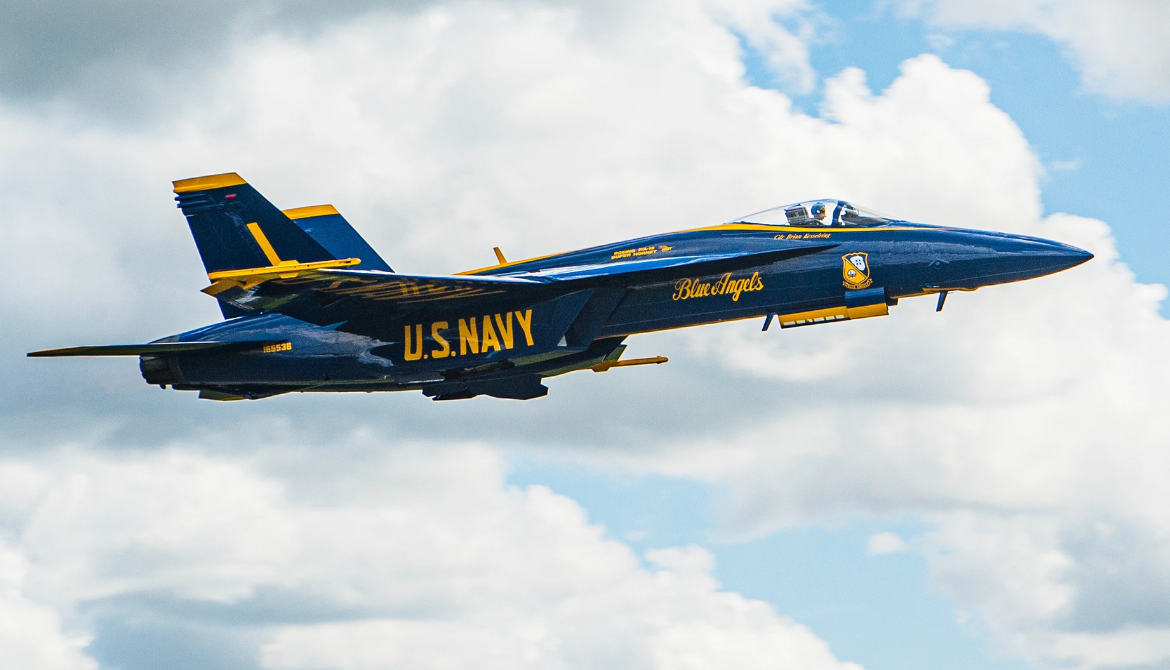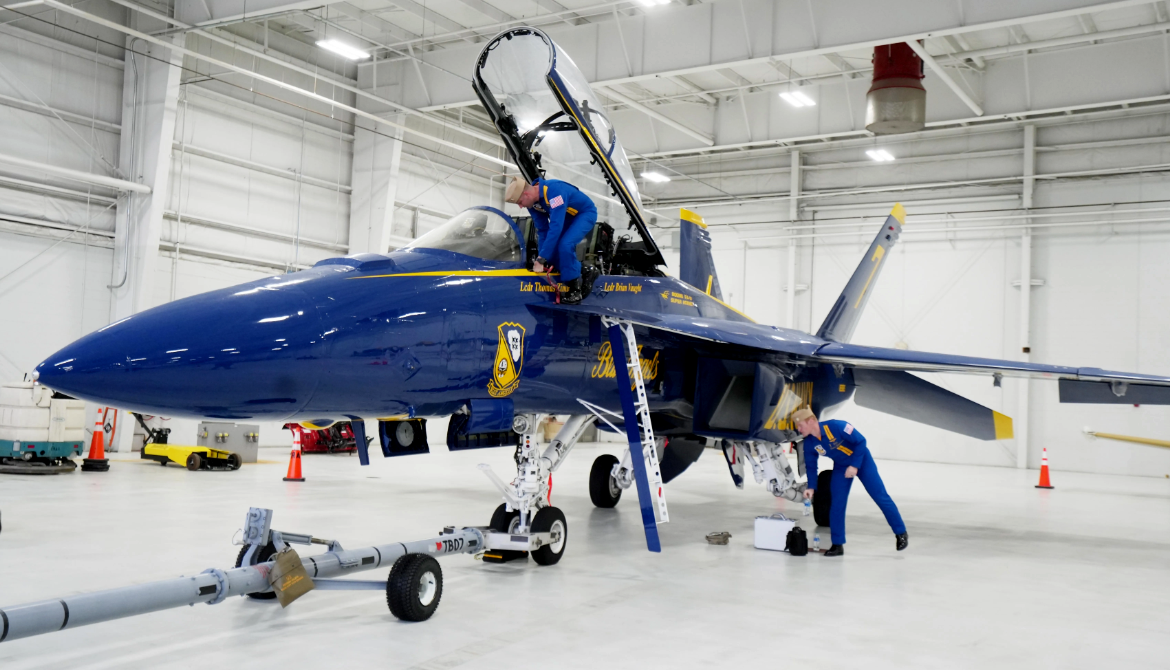
HeadGing 3
Boeing Helicopters Wikipedia link
Heading 6
The Blue Angels are a flight demonstration squadron of the United States Navy. Formed in 1946, the unit is the second oldest formal aerobatic team in the world
Amazing Team Blue Angels "USNavy"
The Blue Angels are a flight demonstration squadron of the United States Navy. Formed in 1946, the unit is the second oldest formal aerobatic team in the world, after the French Patrouille de France formed in 1931. The team, composed of six Navy and one Marine Corps demonstration pilot, fly Boeing F/A-18 Super Hornets.
Team Blue Angels "USNavy"
The Blue Angels typically perform aerial displays in at least 60 shows annually at 30 locations throughout the United States and two shows at one location in Canada. The "Blues" still employ many of the same practices and techniques used in the inaugural 1946 season. An estimated 11 million spectators view the squadron during air shows from March through November each year. Members of the Blue Angels team also visit more than 50,000 people in schools, hospitals, and community functions at air show cities. Since 1946, the Blue Angels have flown for more than 505 million spectators. As of November 2011, the Blue Angels received $37 million annually from the annual Department of Defense budget
The mission of the United States Navy Flight Demonstration Squadron is to showcase the pride and professionalism of the United States Navy and Marine Corps by inspiring a culture of excellence and service to the country through flight demonstrations and community outreach
Created in 1946
 Blue Angels insignia Blue Angels insignia |
|
| Active | 24 April 1946–present |
|---|---|
| Country |
|
| Branch | United States Navy |
| Role | Aerobatic flight demonstration team |
| Nickname(s) | The Blues |
| Colors | "Blue Angel" blue"Insignia" yellow |
| Website | www |
| Aircraft flown | |
| Fighter | Navy F/A-18E Super Hornets (single seat)(Demonstrations use F/A-18Es #1 to 6; backup is a pair of F/A-18F #7) |
| Transport | Marine Corps 1 C-130J Super Hercules |
|
|
||
|
||
|---|---|---|
Team Aerobatic Team Blue Angels. US Navy
AAerobatic Team Blue Angels.
Aerobatic Team Blue Angels.)
The team flew the McDonnell Douglas F/A-18 Hornet for 34 years from 1986 through 2020. The team currently flies the Boeing F/A-18 Super Hornet. In August 2018, Boeing was awarded a contract to convert nine single-seat F/A-18E Super Hornets and two F/A-18F two-seaters for Blue Angels use. Modifications to each F/A-18E/F include removal of the weapons and replacement with a tank that contains smoke-oil used in demonstrations and outfitting the control stick with a spring system for more precise aircraft control input. Control sticks are tensioned with 40 pounds (18 kg) of force to allow the pilot minimal room for non-commanded movement of the aircraft. Each modified F/A-18 remains in the fleet and can be returned to combat duty aboard an aircraft carrier within 72 hours. As converted aircraft were delivered, they were used for testing maneuvers starting in mid 2020. The team's Super Hornets became operational by the beginning of 2021, their 75th anniversary year
Team Blue Angels aircraft history.
Demonstration aircraft History
Grumman F6F-5 Hellcat: June – August 1946
Grumman F8F-1 Bearcat: August 1946 – 1949
Grumman F9F-2 Panther: 1949 – June 1950 (first jet); F9F-5 Panther: 1951 – Winter 1954/55Grumman F9F-8 Cougar: Winter 1954/55 – mid-season 1957 (swept-wing)
Grumman F11F-1 (F-11) Tiger: mid-season 1957 – 1968 (first supersonic jet)
McDonnell Douglas F-4J Phantom II: 1969 – December 1974
Douglas A-4F Skyhawk: December 1974 – November 1986
McDonnell Douglas F/A-18 Hornet (F/A-18B as #7): November 1986 – 2010
Boeing F/A-18A/C Hornet (B/D as #7) Hornet: 2010-2020
Boeing F/A-18E Super Hornet (F/A-18F as #7): 2020–
Support aircraft
JRB Expeditor (Beech 18): 1949–?
Douglas R4D-6 Skytrain: 1949–1955
Curtiss R5C Commando: 1953
Douglas R5D Skymaster: 1956–1968
Lockheed C-121 Super Constellation: 1969–1973
Lockheed C-130 Hercules "Fat Albert": 1970–2019 (JATO usage was stopped in 2009)
Lockheed Martin C-130J Super Hercules "Fat Albert": 2020–present
Photo Gallery
Team Blue Angels USA "US Navy"
US Navy aircraft
The The U.S. War Department created the first antecedent of the U.S. Air Force, as a part of the U.S. Army, on 1 August 1907.
The United States Navy (USN) is the maritime service branch of the United States Armed Forces and one of the eight uniformed services of the United States. It is the largest and most powerful navy in the world, with the estimated tonnage of its active battle fleet alone exceeding the next 13 navies combined, including 11 allies or partner nations of the United States as of 2015. It has the highest combined battle fleet tonnage (4,635,628 tonnes as of 2019) and the world's largest aircraft carrier fleet, with eleven in service, two new carriers under construction, and five other carriers planned. With 336,978 personnel on active duty and 101,583 in the Ready Reserve, the United States Navy is the third largest of the United States military service branches in terms of personnel. It has 290 deployable combat vessels and more than 2,623 operational aircraft as of June 2019
Aircraft In service
Attack AV-8B Harrier II
Electronic warfare E-2C Hawkeye; EA-18G E-6B Mercury
Fighter F-18C/D; F-18E/F; F-35C; F-35B
Helicopter MV-22 Osprey; AH-1W/Z; UH-60; CH-53E
Patrol P-3 Orion; P-8A Poseidon; RQ-8A Firescout
Trainer T-45C; T-6A
Transport C-2 Greyhound; C-20; C-21;C-130; CV-22 Osprey
Boeing Logo
Boeing Rotorcraft Systems (formerly Boeing Helicopters and before that Boeing Vertol)

Boeing CH46 Seaknight
Boeing Vertol CH-46 Sea Knight is an American medium-lift tandem-rotor helicopter.

Boeing MV-22 Osprey
Bell Boeing V-22 Osprey is an American multi-mission, tiltrotor military aircraft



Northrop / Boeing aircraft
F/A-18C Hornet
About
F-18C Hornet
-
Role Multirole fighter National origin United States Manufacturer McDonnell Douglas (1974–1997)
with Northrop (1974–1994)
Boeing (1997–present)
First flight
-
First flight 18 November 1978; 44 years ago Introduction 7 January 1983 (USMC)1 July 1984 (USN) Retired 2019 (Hornet, USN)2021 (RAAF) Number built F/A-18A/B/C/D: 1,480 Developed from Northrop YF-17 Developed into Boeing F/A-18E/F Super Hornet
Boeing X-53 Active Aeroelastic Wing
General Info
- Crew: 1 (C)/2 (D - pilot and weapon systems officer)
- Length: (17.1 m)
- Wingspan: 40 ft 4 in (12.3 m) with AIM-9 Sidewinders on wingtip LAU-7 launchers
- Width: 27 ft 7 in (8.4 m) wing folded
- Height: 15 ft 5 in (4.7 m)
- Empty weight10,433 kg)
- Gross weight: 36,970 lb
- Max takeoff weight: (23,541 kg)
- Fuel capacity: (4,930 kg)
- Powerplant: 2 × General Electric F404-GE-402 afterburning turbofan engines
Performance
- Maximum speed: 1,034 kn (1,190 mph, 1,915 km/h) (12,000 m)
- Maximum speed: Mach 1.8
- Cruise speed: 570 kn (660 mph, 1,060 km/h)
- Range:, 2,017 km)
- Combat range: 740 km)
- Service ceiling15,000 m)
- Guns: 1× 20 mm (0.787 in) M61A1 Vulcan nose mounted 6-barrel rotary cannon, 578 rounds
- Hardpoints: 9 total: 2× wingtips missile launch rail, 4× under-wing, and 3× under-fuselage with a capacity of 13,700 lb (6,200 kg)
Armament




